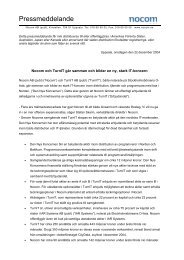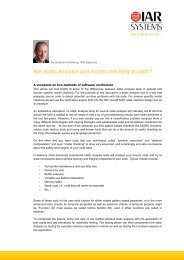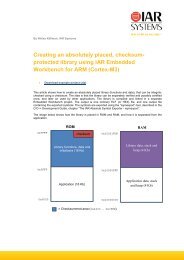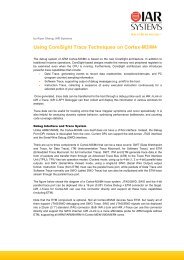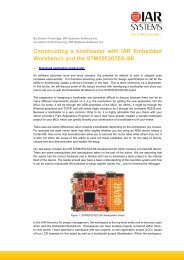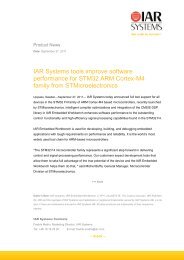Choosing an RTOS - IAR Systems
Choosing an RTOS - IAR Systems
Choosing an RTOS - IAR Systems
You also want an ePaper? Increase the reach of your titles
YUMPU automatically turns print PDFs into web optimized ePapers that Google loves.
How to choose <strong>an</strong> <strong>RTOS</strong> – ESC 2011<br />
Common features of <strong>RTOS</strong>s<br />
Queues/messages<br />
• These provide a thread-safe m<strong>an</strong>ner for inter-task<br />
communication so that you don’t have one task reading a<br />
piece of RAM while <strong>an</strong>other is writing to it<br />
• A message is a fixed-length queue <strong>an</strong>d therefore generally<br />
has less overhead associated with processing it<br />
• Different <strong>RTOS</strong>s place different restrictions on the size of<br />
queues as well as how m<strong>an</strong>y queues/messages c<strong>an</strong> be<br />
created<br />
• These messages are processed in a FIFO m<strong>an</strong>ner, so the<br />
first queue/message to arrive is the first to be processed<br />
• The <strong>RTOS</strong> h<strong>an</strong>dles the allocation <strong>an</strong>d de-allocation of the<br />
queue/message using the same thread-safe memory<br />
m<strong>an</strong>agement previously described, so the efficiency of the<br />
m<strong>an</strong>ager c<strong>an</strong> impact the perform<strong>an</strong>ce for copious queues




